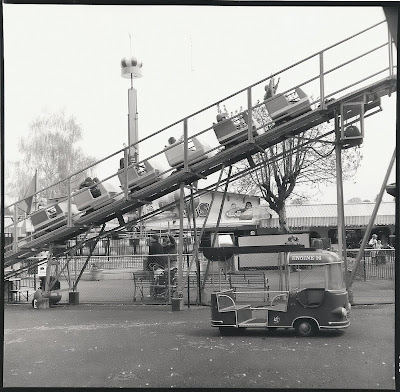
I saw an ad in Craigslist of someone trying to get $455.00 for a Nikkormat with standard lens that he paid
600.00 for at the aptly named Blue Moon Camera (possibly named because once in a blue moon they manage to sell a 40 year old camera for a 400% markup). They also sell reconditioned manual typewriters. Here is a picture from the Oregonian last Winter of our Mayor during happier times taking a "How can we help you" tour at Blue Moon camera.
Of the Nikon SLR's that I have owned the
Nikkormat is my favorite. Compared to the
F-1 it has a nice compact design. If I had a few hundred bucks to spend on an old Nikon I'd look for an
F2 recently overhauled. The
F2 would probably hold it's value a little better and it was designed to work with a 1.5 volt battery. Bigger and heavier then the Nikkormat but much more collectible.
I went to Blue Moon Camera once. It's really more a "Camera and Typewriter Boutique" then used camera store. The kind of business that could only exist in Portland, Oregon.




















